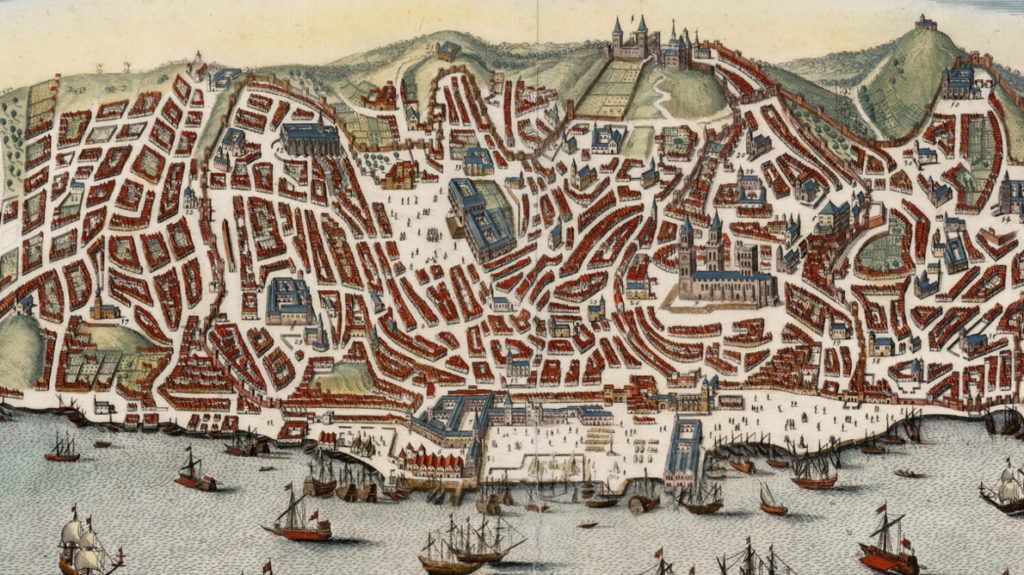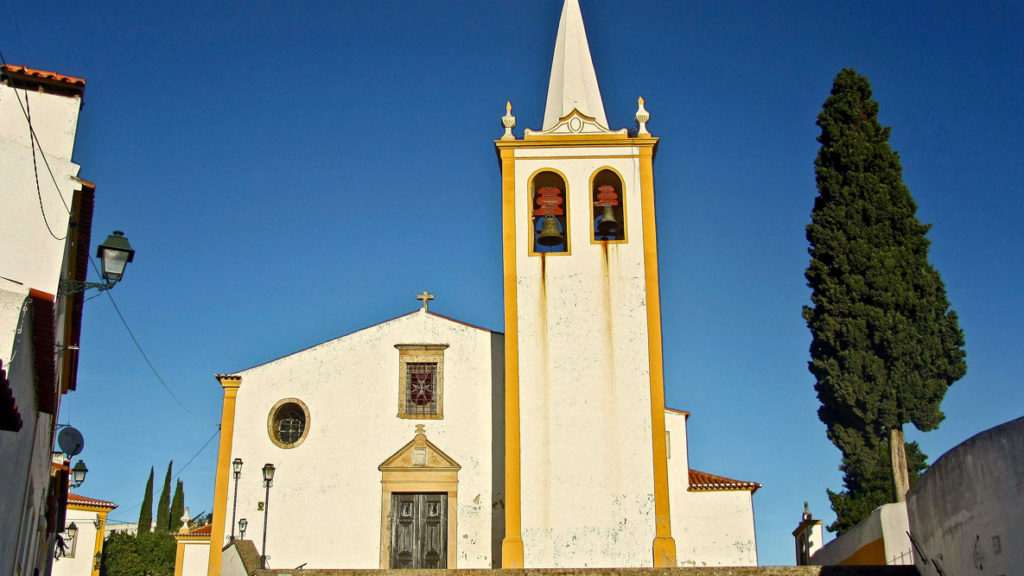The 17th century Portuguese composer Henrique de Faria
❧
As is the case with many Portuguese composers of the sixteenth and seventeenth centuries, those whose musical careers were mostly developed in ecclesiastical institutions of lesser importance, when compared to the great cathedrals and monastic and conventual houses, are frequently almost unknown with scarce information circulating besides a name, dates of birth and death (sometimes not even these dates are known), and an institution where they worked. This can be a good characterization of the composer Henrique de Faria, active throughout the seventeenth century, which is usually referred as one of the many pupils of the composer Duarte Lobo.
We owe much of the information known about Henrique de Faria to eighteenth-century author of the Bibliotheca Lusitana Diogo Barbosa Machado, which dedicated him a brief entry in the second volume of the work. According to Barbosa Machado, Faria was born in Lisbon and had studied with Duarte Lobo (Barbosa Machado, 1747: 448). This suggests that Faria might have been a student of Lobo at the Seminar of S. Bartolomeu since he was a master of the choirboys at the institution during the first half of the seventeenth century (Alegria, 1984: 18).
Barbosa Machado associated Faria as mestre[1] of the Lisbon parochial churchesof Santa Justa and Nossa Senhora dos Mártires and, lately in the parochial church (Igreja Matriz) of the vila of Crato in the Alentejo province where he died. He then ends referring that there were compositions by Faria in manuscripts preserved in the church of Crato, a very vague statement common to other composer entries in the Bibliotheca Lusitana (Barbosa Machado, 1747: 448).
From this reference by Barbosa Machado, we are not certain if Henrique de Faria was a clergyman or a lay musician, although his passage by the Seminar of S. Bartolomeu, despite it also being an institution for music education, strongly suggests that he received ecclesiastical orders.
Faria first served in the parochial church of Santa Justa, one of the oldest parishes of Lisbon that was burned in the aftermath of the 1755 earthquake, and the parish was later transferred to the Church of São Domingos. Not much documentation exists regarding the period we assume Faria served there as chapel master, probably lost following the 1755 fire. He also served in the neighbouring old parish of Nossa Senhora dos Mártires, that church having the same of Santa Justa following the 1755 earthquake although, the latter was reconstruction afterwards.

Following Barbosa Machado’s account, Faria’s last post was as chapel master in the Church of Our Lady of Conception, in the priory of Crato, a village in central Alentejo very close to the Spanish border and the seat of the Order of Malta in Portugal. We were unable to confirm the statement of Barbosa Machado that Faria died in Crato. The parish books now preserved at the Portalegre Districtal Archive do not register his death during the seventeenth century. It is important to remark, though, the existence of a gap in these registers that include the years from 1652 to 1655, which might have been the years of his death.
The Church of Nossa Senhora da Conceição in Crato was a collegiate with six benefices. By the mid-eighteenth century the Collegiate had four choirboys who earn an annual 3.800 reis. The chapel master had an annual salary of 12.000 reis and a further 40 alqueires of wheat for playing the organ (Dicionário, [1758]: 3210). This had already been noted by António Carvalho da Costa in 1708, who mentioned that the village had 700 inhabitants. He also refers the ecclesiastical structure of the Collegiate, notably the vicar and the beneficiaries and their respective salaries. The post of chapel master is also mentioned with the annual salary of 12.000 reis for directing the music and teaching o canto dorgão to the choirboys (Costa, 1707: 579). Here we see a novelty that was very different fifty years later. At the beginning of the century the chapel master had no obligation of playing the organ, which might have been later related to the construction of the new organ in the 1740s sponsored by the prior D. Pedro (Dicionário, [1758], 3210). The number of choirboys was also augmented from two at the beginning of the century to four in 1758. We assume that the situation described by Costa in his Corografia at the beginning of the eighteenth century would be the one inherited from the previous century and thus the institutional context in which Henrique de Faria worked.

Henrique de Faria is also referenced as author of several compositions. Barbosa Machado himself stated that there was a collection of manuscripts in the church of Crato with his compositions, although he doesn’t mention any work in specific (Barbosa Machado, 1747: 448). However, in the Index of the Music Library of King D. João IV, printed in 1649, we find the psalm Lauda Jerusalem in Tone VIII for eight voices. This work appears in a bundle of psalms together with works by another pupil of Lobo, Gonçalo Mendes Saldanha, among other composers such as Diego de Pontac and Fr. Pedro da Fonseca Luzio, the latter active in Vila Viçosa, a village not far from Crato. The Index also refers a villancico, Una blanca corderita/Reprenid vuestro llanto, for solo and eight voices. Again, this composition is in a bundle of villancicos de Navidad that include other works by composers such as Mateo Romero El Capitán, and the Portuguese composer Manuel Correia do Campo, Diogo Gomes, and Filipe de Magalhães. Besides these two references, there are no known works to have survived by Henrique de Faria to this day.
[1] We assume that he is referring to the post of mestre de capela (chapel master).
BIBLIOGRAPHY
Primary Sources
Dicionário Geográfico de Portugal, Tomo 12, C 5 [1758], Crato. Arquivo Nacional Torre do Tombo, Memórias Paroquiais, vol. 12, n.º 459, 3201-3228.
Secondary Sources
ALEGRIA, J. A. (1985). O ensino e prática de música nas sés de Portugal (da Reconquista aos fins do século XVI). Lisboa: Instituto de Cultura e Língua Portuguesa.
ALEGRIA, J. A. (1984). Polifonistas Portugueses. Duarte Lobo, Filipe de Magalhães, Francisco Martins. Lisboa: Instituto de Cultura e Língua Portuguesa.
BARBOSA MACHADO, D. (1747). Bibliotheca Lusitana. Tomo II. Lisboa: Na Officina de Ignacio Rodrigues.
COSTA, A. C. (1708). Corografia Portugueza e Descripçam Topografica do Famoso Reyno de Portugal. Tomo Segundo. Lisboa: Na Officina de Valentim da Costa Deslandes.
NERY, R. V. (1984 ). A Música no ciclo da Bibliotheca Lusitana. Lisboa: Fundação Calouste Gulbenkian.
Luís Henriques is a PhD in Musicology from the University of Évora and a researcher at the University of Évora branch of the Centre for the Study of Sociology and Musical Aesthetics, based at the NOVA-FCSH. This post was first published on the Canto Mensurable blog on 23 January 2023, https://cantomensurable.hcommons.org/composer-henrique-de-faria/

